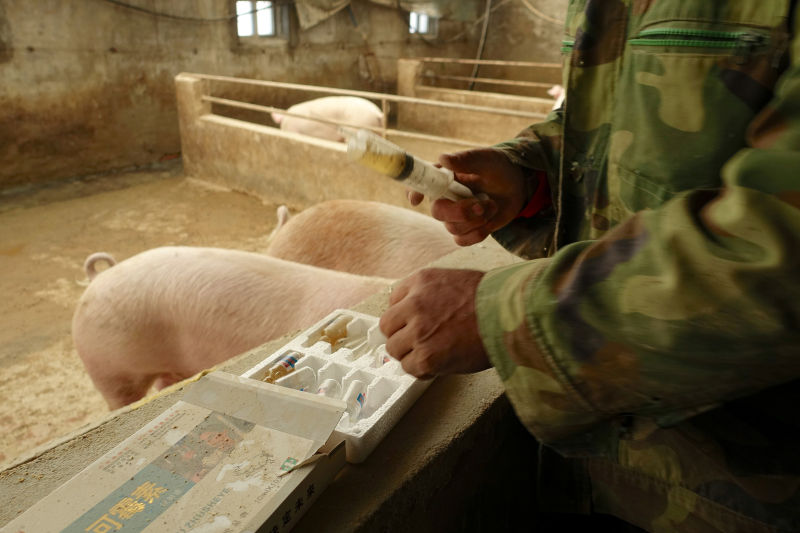Chinese pig breeders are looking to improve the genetics of their livestock, and are turning to biotech to revolutionise a traditional industry.
Few Chinese farm managers have experience with the necessary intensive data collection, but state-led endeavours hope to breed a self-sustaining herd to feed its 1.4 billion people.
Tiny slivers of ear tissue snipped from hours-old piglets offer valuable clues for the team at Best Genetics Group (BGG) as it strives to improve the genetics of China’s pig herd to produce cheaper meat for the world’s top pork consumer.
Breeding pigs that have larger litters, reach slaughter weight quicker and require less feed can make a big difference in a market producing almost 700 million animals a year.
China has the world’s biggest pig herd, but relies heavily on imports for breeding material, more so after the African swine fever virus in 2018-19 decimated its porcine population and wiped out much of its breeding pool.
“We must insist on our own independent breeding,” Hao Wenjie, BGG’s head breeder, told Reuters at one of its farms that lies about 30 km (18.64 miles) outside the small city of Chifeng in northern China’s remote Inner Mongolia region.
“Only then can we provide high-quality seeds, or breeding stock, for our market and break this need for everyone to go to foreign varieties,” she added.
These efforts come amid President Xi Jinping’s calls for self-sufficiency in food, with the focus recently turning to the genetics or the “chips” of agriculture, seen as a weak link in China’s food security. China needs its own seeds to guarantee its “food bowl”, Xi said last month.
Raising a pig in China costs about two-and-a-half times more than in the west due to costly imported feed and high levels of disease.
Genetic Improvements
Genetic improvements for cheaper meat are thus in high demand. But so far international companies have been better at this.
Netherlands-based genetics consultant Jan Merks on a visit to BGG’s farm admonished staff for mixing some batches. “In a commercial farm, it doesn’t matter if you use two different boars during a sow’s heat. Here, it has to be same.”
Despite such hurdles, privately owned BGG, founded 10 years ago, is among those making progress.
After buying 1,200 purebred sows from Canada-based Genesus in 2012, it has expanded the herd to 6,000 and average number of piglets born per litter to 15, one more than when it began.
Now BGG aims to increase the litter size by another 1.35 in five years and reduce the backfat on its boars.
BGG collects hundreds of thousands of data annually on traits including litter size, loin depth, and daily weight gain. It selects the pigs with the highest values across such traits for breeding, improving performance with each generation.
Genomic selection is helping speed up the process. For example, based on the DNA from the tissue of a piglet’s ear, BGG predicts how well a pig will perform, boosting the chances of selecting the best breeders.
“We have a goal of 3-5 years for improvement of each trait,” Hao said.
“After seven years of genetic improvement, the characteristics of the current breeding pigs are quite different from those of the imported breeding pigs,” he added. “They can be called our own domestic breeds.”
- Reuters, with additional editing by George Russell
READ MORE:
Taiwan Votes Against Reimposing Ban on US Pork Over Additive
Philippines Lifts BSE Ban on Canadian Beef Imports
Beyond Meat Opens JD.com store, But Chinese Consumers Cautious






















